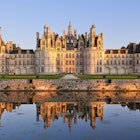
Jan 20, 2026 • 8 min read
Chile is a broadly accessible destination, but travelers who are aware of a few customs and safety issues will make the most of their visit.

Jan 20, 2026 • 8 min read
Chile is a broadly accessible destination, but travelers who are aware of a few customs and safety issues will make the most of their visit.

Jan 20, 2026 • 8 min read
Don't miss the best of Costa Rica. Here's our pick of the unmissable places to visit.

Jan 20, 2026 • 3 min read
Max Knight, a Los Angeles-based British photographer, takes you on a ride across the Swiss Alps via the UNESCO-listed Rhaetian Railway.

Jan 20, 2026 • 4 min read
Beloved for its one-of-a-kind urban energy, Naples also has some fine beaches dotted along its long waterfront – especially the beaches of Posillipo.

Jan 19, 2026 • 8 min read
Canada’s best beaches range from surfing areas off Vancouver Island to sandbars on the Atlantic Ocean to dreamy lakeside beaches in between.

Jan 19, 2026 • 11 min read
The last Buddhist kingdom in the Himalayas, Bhutan serves up remarkable and life-changing experiences.

Jan 19, 2026 • 7 min read
If the 2024 Summer Olympics in Paris piqued your interest, it’s not too early to turn your focus to the 2028 games in LA.

Jan 19, 2026 • 11 min read
From family beaches to quiet coves and great stretches of empty golden sand, the best beaches in Ireland offer something for every kind of traveler.

Jan 19, 2026 • 6 min read
Whether you’re looking to relax or chase adrenaline, there’s lots to do in Palm Springs and throughout the Coachella Valley year-round.

Jan 19, 2026 • 6 min read
Hawaiian culture is about much more than melodic place names and luau – slow down and learn at these amazing cultural experiences in Maui.

Jan 19, 2026 • 5 min read
Timing a trip to Costa Rica depends on the small but mighty country's weather patterns and your desired activities. Use this guide to kickstart your planning.

Jan 19, 2026 • 6 min read
England’s lengthy, diverse history is chronicled by a wealth of important and distinct museums, many situated well beyond London.

Jan 19, 2026 • 14 min read
Florida has no shortage of coastline. These 12 beach towns are our absolute favorites.

Jan 18, 2026 • 7 min read
On these beloved St Augustine beaches escape the crowds, find the best surf, swim the warm waters, go shelling or catch a few hours with a book under the sun.

Jan 18, 2026 • 11 min read
Plan your spring vacation in Europe with our pick of the best places to see as the weather gets warmer.

Jan 18, 2026 • 7 min read
From wildflowers to beaches to city energy and national parks, these US destinations offer tremendous variety for spring travel.

Jan 17, 2026 • 4 min read
Maui is making it easier for tourists to give back to the local community. Here's how to volunteer.

Jan 17, 2026 • 5 min read
Discover the best time to visit Florida Keys, with tips on seasons, weather, prices, crowds, events and ideal months for water activities.

Jan 16, 2026 • 8 min read
A family vacation to Bali, an island in Indonesia, offers the chance to expose your children to volcanoes, Indonesian culture and water sports.

Jan 16, 2026 • 5 min read
Turns out you don't have to travel far from home to scratch that vacation itch – here's our guide to planning the perfect staycation in your nearest US city

Jan 16, 2026 • 11 min read
Discover France’s best châteaux – from cliff-hanging Pyreneen forts to Loire palaces galore.

Jan 16, 2026 • 7 min read
The best museums in Florence display everything from Renaissance masterpieces to contemporary art, science collections and more.